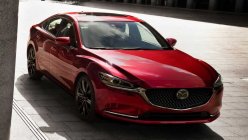They say that bigger is always better. One of the most popular modifications done in either a new or used car is upgrading the wheel setup of a car and that includes both the wheels and tires.
Why wouldn’t you? It is one of the least expensive, has the most impact on both performance and looks, and you have a ton of customization options to choose from.
There comes a time in your car’s life that you will have to swap out those tires anyway so might as well go for changing the look by grabbing some new shoes!

Upsizing wheels can make an economy car look desireable (Photo from RF Wheels)
There are some drawbacks though and today, we’ll be discussing the pros and cons of changing your car’s wheel setup by getting bigger and fatter wheels.
Now we won't be getting into details such as offset, brands of mags and tires, ratings and all that, we can talk about all that at a different time. So sit back and relax as we count off the different pros and cons, should you do it or not?
Pros: Your car will have an infinitely better looking
Now, you can fight me in the comments section about this part but think of it this way; you get your car the way the manufacturer thinks you want it.
It might have all these fancy machined look or two tones finish right out the factory but at the end of the day, you are letting the car brand dictate the look for you.
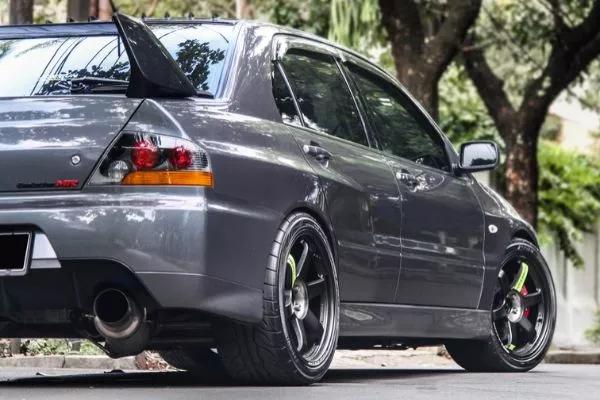
The right mags on the right car is a match made in heaven
With upgrading your car’s mags you get to choose what you want to be paired with the car. Of course, some degree of research is required of this but if you chose that look for the car you must really have loved the look of those mags, otherwise, what is the point?
>>> Check out: [Philkotse guide] Everything you need to know when having new tires
Cons: You can go overboard with the design
The other side of being able to choose your car’s design is your own personal taste and imagination. Not to judge how people select their car designs but not everyone is cut out for it.
My own creative designs often get judged as well and I accept that fact by doing the proper research and asking for other people’s opinions.
This part might go against everything your parents told you that you are special and that you are a creative genius but with so much freedom in your hands, the taste can easily get thrown out the window.
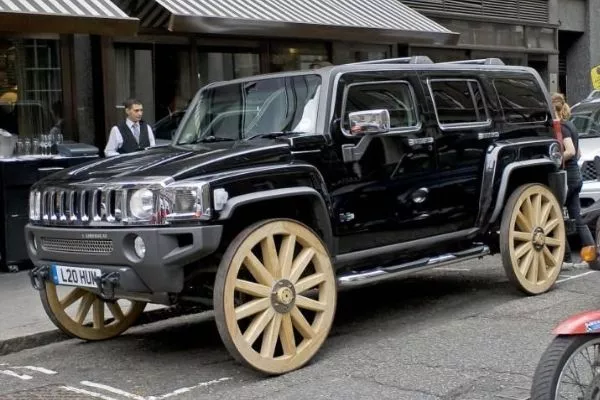
This is what I meant with going overboard
Pros: Improve the stance of your car
In most cars, manufacturers have to balance many factors. The logistics of getting to make a great looking car that performs well, has good handling and good fuel economy and achieves the specific price point is mind-blowing and along with that Venn diagram is the perfect car.
The keyword here is a compromise, and with upgrading to aftermarket wheels you get to improve the overall stance of the car.
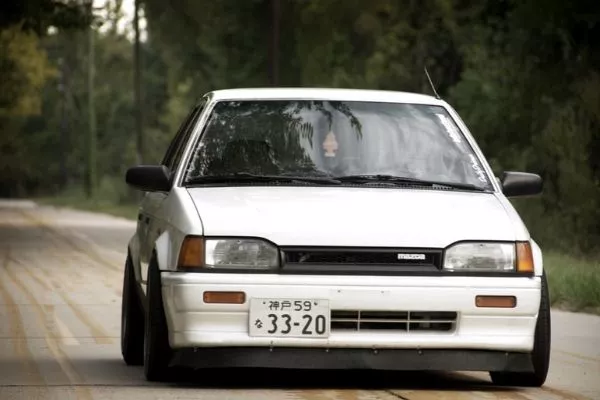
The right stance can turn any car into a supercar
We’re touching a bit on off-set here and the act of pushing your wheels out just by even an inch or 2 makes a huge difference instance. Imagine a frumpy old hatchback with its wheels pushed out and drool at how sexy it becomes.
>>> Read more: 10 kinds of tire wear can indicate a car’s general condition
Cons: Incorrect stance can ruin driveability
Altering the stance of the car also alters the car's engineering and center of gravity and weight. Engineers and car companies have spent years between car generations to bring the car to its optimum operating specification.
The mere act of altering the car’s stance or can severely affect the suspension, steering and payload capacity. It does look cool but only to a certain point. Unless you want to set your car up for a static display you can go crazy with your car modifications.
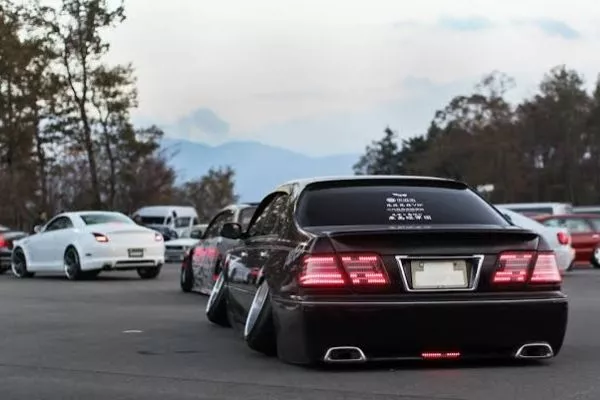
Unless you want your car to stay this way maybe leave this to the pros
Pros: Improve traction and cornering ability
As I’ve said earlier, upgrading your tires is the easiest and has the most impact on your car of all the car modifications. A wider track increases the amount of width your car has on the road below it.
This increases grip and traction and gives the car’s cornering ability more bite than the stock setup.
Wider tires do the same thing as stock tires are naturally thinner to keep costs down. Have you noticed how car brands put wide and fat tires on their performance models? A good set of tires can go a long way and the bigger they are, theoretically the bigger the performance.
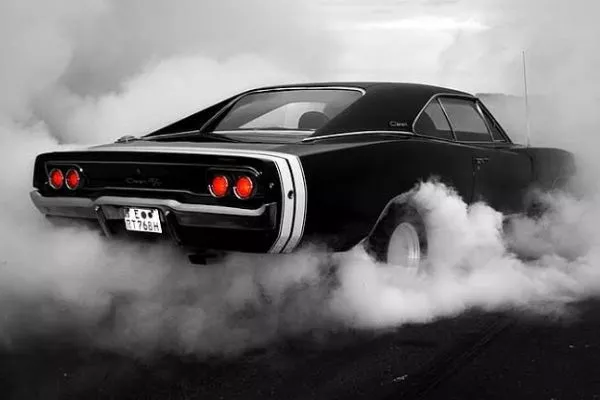
Every second counts in competition and tires give you an advantage
>>> FYI: A short guide to coilovers and how they help to make your car handle better
Cons: Fuel economy is negatively affected
Having a wider track and wider wheels also affect the car’s fuel economy in a negative way. With the increased contact patch on the road beneath it, the engine will have to work harder to make those wheels spin.
As I’ve said earlier, compromises have to be made to make sure that people will want to buy their cars for what they are.
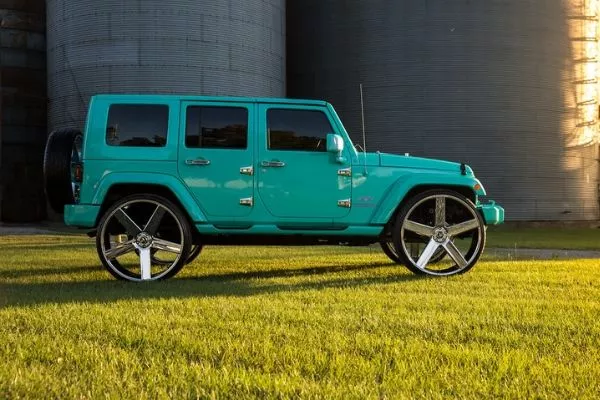
If you have money to afford these dubs, fuel economy shouldn't be a priority
Economy cars are sold with thinner tires to save both weight and reduce contact, giving much better fuel economy. Not to mention that bigger tires are much more expensive to replace when the time comes to do so.
>>> Grab your attention: Fuel-efficient tire: Is it worth your choice?
Pros: Decreased braking distance
Bigger wheels and tires, as stated earlier increases the car's contact patch. It can hug the road during aggressive canyon carving and another pro is better stopping power. With more of that rubber in contact with the road tests have proven that you can stop at dime better with larger wheels.
This is very helpful during emergency braking, especially in wet and slippery conditions. You can actually use this as a good selling point to the team (your family) if you badly want to upsize your mags without sounding too much like a boy racer. It’s about safety!

During hard cornering or emergency braking every inch counts
>>> Also check: Three advantages of bigger wheels
Cons: Error with a speedometer reading
The car, straight out of the factory is made to run on very specific parameters. If your car runs on 15-inch mags, the sensors such as the speedometer and other gauges were set to run on those stock wheels.
If you increase your mags by more than an inch, it messes up those conditions, the speedometer will still think that it is running on 15s when in fact you already have 17s or even 18s on.
It just makes sense, a single revolution with stock mags has to travel less than on a larger wheel. This is also another cause as to why it consumes more gas.

Keep your eyes on the speedo especially on the highway
>>> Corners for updates: Tubeless Tire Technology for cars: All you need to know
With all these pros and cons I bet you’re starting to doubt yourself as to whether you should still get to upsize your mags, but you have nothing to worry about.
As we’re talked about earlier, at the end of the day, your decision still reigns king. The aftermarket wouldn’t be such a lucrative market if it weren’t for nothing.
I would also be hypocritical if I told you that I would not want to upsize myself. The key is balance, restraint, and research. Always make sure that you know what you are doing and you should be fine.

You know you want it. you can't deny it
We love giving you these tips and there are going to be a lot more of these for the new year. Make sure that you follow Philkotse.com, subscribe to our YouTube Channel and like our Facebook.
Recent posts
- How to properly put on a steering wheel cover Mar 03, 2021
- 4 questions to ask when choosing the best tire for your car Nov 17, 2022
- Shoes for your ride: Steel vs Alloy wheels Jan 04, 2021
- Color & your choice of wheels Apr 21, 2020
- 4 drawbacks to bigger wheels Jan 22, 2018


